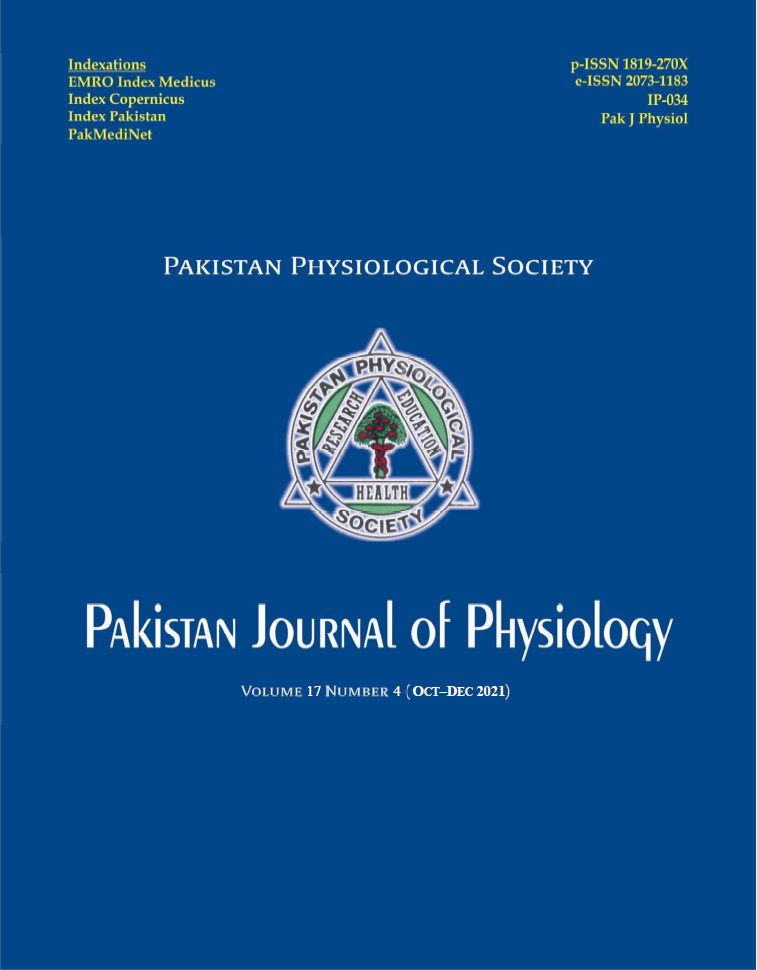COMPARISON BETWEEN TRADITIONAL, RECORDED, AND ZOOM ONLINE PHYSIOLOGY TEACHING IN UNDERGRADUATE MEDICAL STUDENTS DURING THE COVID-19 PANDEMIC
DOI:
https://doi.org/10.69656/pjp.v17i4.1347Keywords:
Physiology, COVID-19, Traditional, Online Teaching, Medical EducationAbstract
Background: Due to COVID-19 educational institutions remained closed for traditional teaching, and online teaching methods were implemented. The recorded physiology lectures were forwarded to students, and teaching was conducted online. The objective of this study was to compare online, recorded, and face-to-face physiology teaching in undergraduate medical students during COVID-19 pandemic. Methods: This cross-sectional study was conducted from April to June 2021 at Jinnah Medical and Dental College, Karachi, Pakistan. The study participants included 84 undergraduate 2nd year medical students. The questionnaire included 21 items regarding zoom online, recorded, and traditional teaching. The students selected the preferred teaching method. The data were presented in terms of percentage for individual items, preference in theory, tutorial, and overall preferred teaching method. Results: The medical students believed that presence of teacher (86.9%), asking queries to teacher (87%), giving feedback to teacher (81.2%), and interest in learning (83.8%) were more important elements to consider for traditional teaching. Regarding the recorded lectures, understanding the lecture (51.4%), and studying at own pace (52.7%) were found to have high percentage. In relation to preference of teaching method for theory (73.5%), tutorial (76.9%) overall preferred teaching method (78.2%), majority of the students selected traditional teaching method. Conclusion: The majority of undergraduate medical students had a preference for traditional teaching methods in Physiology. Among online teaching during COVID-19 pandemic, the students preferred recorded sessions over zoom online classes.
Pak J Physiol 2021;17(4):51–4
Downloads
Downloads
Published
How to Cite
Issue
Section
License
The author(s) retain the copyrights and allow their publication in Pakistan Journal of Physiology, Pak J Physiol, PJP to be FREE for research and academic purposes. It can be downloaded and stored, printed, presented, projected, cited and quoted with full reference of, and acknowledgement to the author(s) and the PJP. The contents are published with an international CC-BY-ND-4.0 License.











